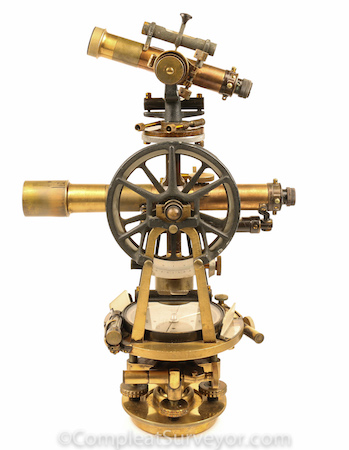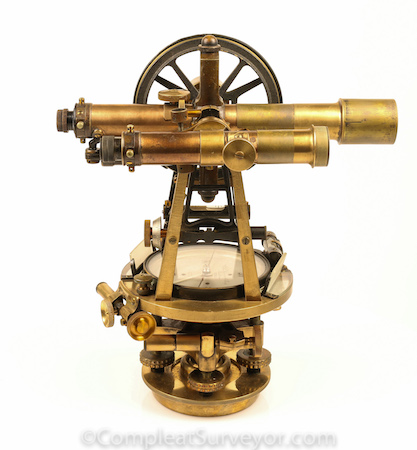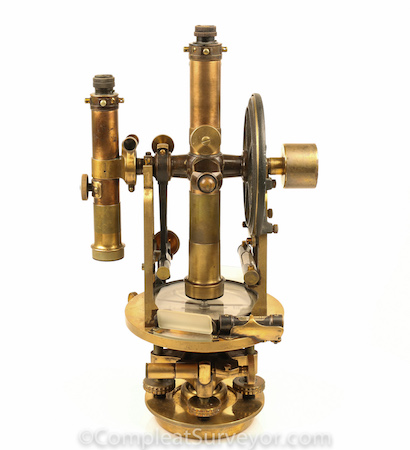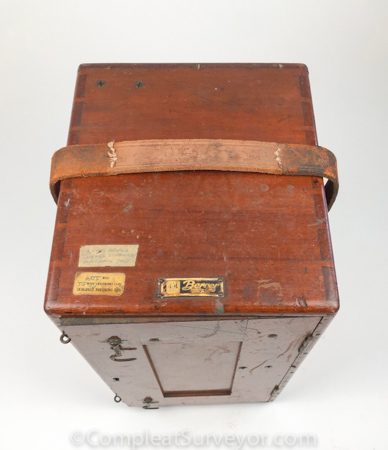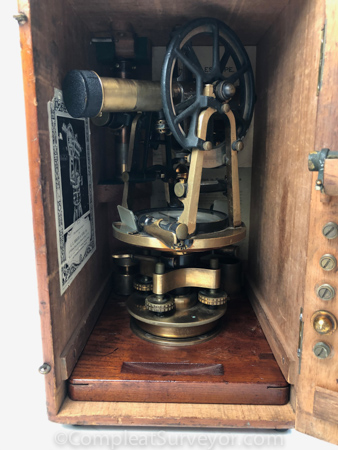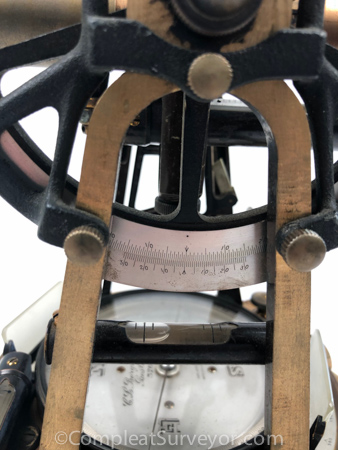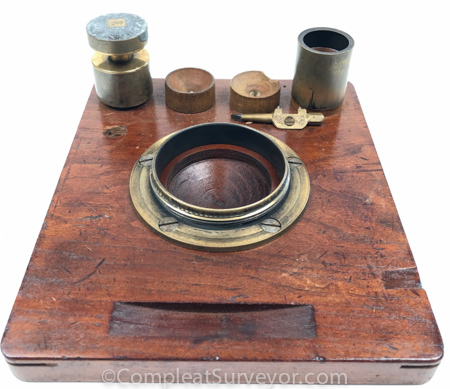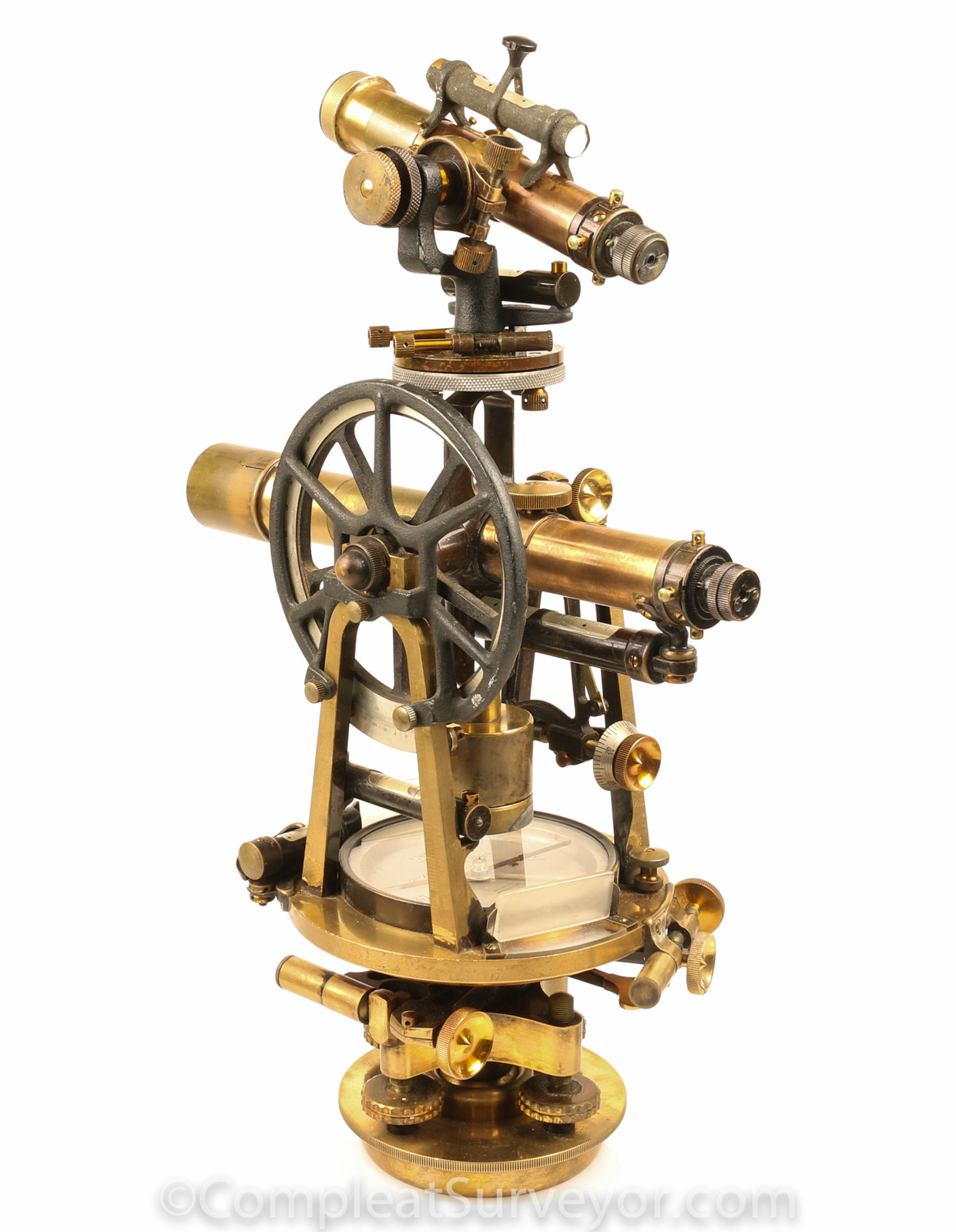
Amazing 1901 Berger Solar & Mining Transit With Equatorial Adapter
Rare Instrument with Known History Since New (S/N 3762)
SOLD - Email Russ
Every now and then I come across an instrument that I would like to keep. This is one of those instruments.
While Gurley was the dominant maker of surveying instruments in the late mid to late 19th century to the early 20th century, Berger had a surprising large marketshare of the mining transit market. After looking at many mineral survey filled notes in the public land states, I believe that Berger sold significantly more transit used in mine surveys than Gurley did.
Gurley offered a full-featured solar and mining transit by combining a burt solar apparatus with a second auxiliary telescope. This instrument is quite rare, and HIGHLY collectible.
The transit offered here is Berger's full-featured solar and mining transit, equivalent if not superior to Gurley's full-featured transit.
Berger invented an "Equatorial Adapter" to create its full-featured transit. The Equatorial Adapter basically converts Berger's auxiliary mining scope into a full-blown solar apparatus, which Berger naturally claims is superior to all other solar attachments.
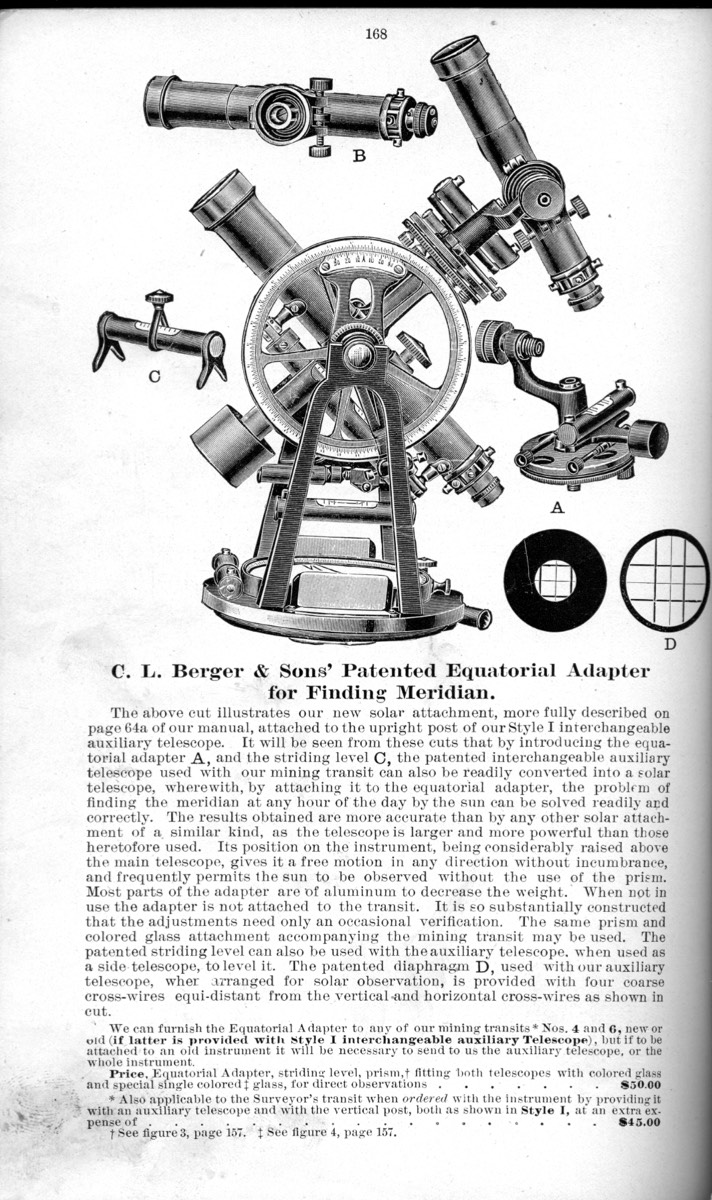
Berger developed the Equatorial Adapter at the end of the 19th Century, and various Engineering journals published write-ups about the Adapter in 1899. See Article Here. Berger patented the Equatorial Adapter in December 1901. See Patent here.
Professor Edward Williams of Lehigh University ordered this instrument from Berger in Nov 1901. Professor Williams was a mining professor at Lehigh, but was a surveyor before joining Lehigh. A copy of Berger's original order sheet (see below) shows everything that Professor Williams wanted. While some of the original order have disappeared, like the tripod and telescope reflector, all of the CRITICAL parts, like the equatorial adapter, striding level and gradienter, have survived!!! That's amazing considering that this instrument was likely used by numerous college students over the years.
I acquired this instrument from a former Lehigh University employee - he acquired the instrument from Lehigh about 20 years ago. The instruments appears to have been serviced, and then put away for long term storage. Everything seems to work, and the scopes seem very nice although inverted (as ordered by Prof Williams in 1901).
Fun Fact - Mansfeld Merriman was a professor and Head of the Civil Engineering Department at Lehigh University when the University purchased the Berger Transit. Merriman, who authored the "Handbook for Surveyors", no doubt played around with this cutting edge instrument.
The Berger Handbook the 1900 to 1910 range feature the Berger full-fledged Solar and Mining Transit. One illustration in particular caught my attention - see the illustration below. The illustration shows a striding level atop the transit and an unusual counterpoise to balance out the solar apparatus/striding level. The transit offered here has both the striding level AND the special counterpoise (which is actually a second counterpoise that screws into the main counterpoise).
The handbook indicates that the striding level can also be used with the second scope when the scope is being used in mining as a horizontal scope to the main scope.
For more on Berger and the Berger handbooks, please see my Berger Maker Webpage.

Additional Pictures
© 2020 Russ Uzes/Contact Me
